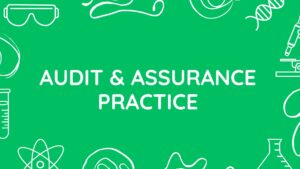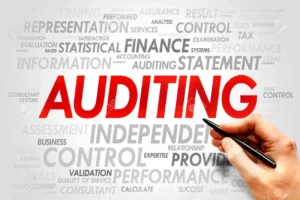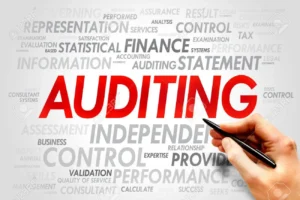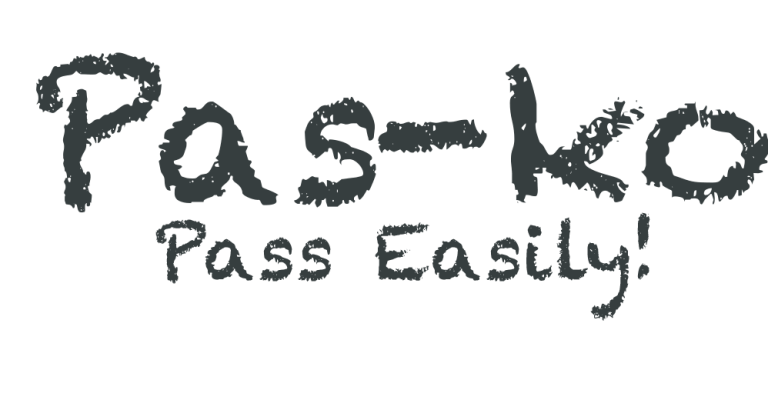SECTION B
Answer ANY TWO (2) questions form this section.
QUESTION 1
(A) There are specific regulatory obligations imposed on accountants and auditors in relation to detecting and reporting money laundering activities. You have been asked to provide a training session to the new audit juniors on auditors responsibilities in relation to money laundering.
Required:
Prepare briefing notes to be used at your training session in which you:
(i) Explain the term ‘money laundering’.Illustrate your explanation with examples of money laundering offences, including those which could be committed by the accountant; and
[5 Marks]
(ii) Explain the policies and procedures that a firm of Chartered Accountants should establish in order to meet its responsibilities in relation to money laundering.
[5 Marks]
(B) In order to comply with the ethical code of conduct, it is widely recognised that senior audit personnel should be removed from engagements after a certain period (between five and ten years, depending upon the status of the client and national customs). To strengthen the ethical code of conduct further, professional accountancy bodies are currently debating whether to impose mandatory “rotation” periods for senior personnel.
Required:
(i) Discuss why audit partner rotation is important in an ethical code of conduct.
[4 Marks)
(ii) Identify and explain two (2) problems a small or medium sized firm of chartered certified accountants might face if the partner rotation threshold is lowered and identify a possible solution to each problem.
[4 Marks]
(C) Explain the importance of the principle of confidentiality to the auditor-client relationship.
[2 Marks]
QUESTION 2
(A) Outline any six (6) control procedures you would expect a client to put in place in connection with non-current tangible assets.
[6 Marks]
(B) Smart Products Ltd is a giant manufacturer of detergents and edibles with its production plant located in Tema. The products are manufactured using a mix of robot and manual production lines. The “human” workers normally work a standard eight hour a day, although this is supplemented by overtime on a regular basis as Smart Products Ltd has a full order book. There is one shift per day.
Wages system – Shift workers
Shift-workers arrive for work at about 7.00 am and ‘clock in’ using an electronic identification card. The card is scanned by the time recording system and each production shift-worker’s identification number is read from their card by the scanner. The worker is then logged in as being at work.
Shift-workers are paid from the time of logging in. The logging in process is not monitored as it is assumed that shift-workers would not work without first logging in on the time recording system.
Shift-workers are split into groups of about 30 employees, with each group under the supervision of a shift foreman. Each day, each group of shift-workers is allocated a specific assignment within the plant. If necessary, overtime is worked to complete the day’s quota of production units. The shift foreman is not required to monitor the extent of any overtime working although the foreman does ensure workers are not taking unnecessary or prolonged breaks which would automatically increase the amount of overtime worked. Shift-workers log off at the end of each shift by re-scanning their identification card.
Payment of wages
Details of hours worked each week are sent electronically to the payroll department, where hours worked are allocated by the computerised wages system to each employee’s wages records. Staff in the payroll department compare hours worked from the time recording system to the computerised wages system, and enter a code word to confirm the accuracy of transfer. The code word also act as authorization to calculate net wages. Each week the computerised wages system calculates:
i. gross wages, using the standard rate and overtime rates per hour for each employee,
ii. statutory deductions from wages, and
iii. net pay
The list of net pay for each employee is sent over Smart Products Ltd’s internal network to the accounts department. In the accounts department, an accounts clerk ensures that employee bank details are on file. The clerk then authorises and makes payment to those employees using Smart Products Lid’s online banking systems. Every few weeks, the financial accountant. reviews the total amount of wages made to ensure that the management accounts are accurate.
Termination of employees
Occasionally, employees leave Smart Products Ltd. When this happens, the personnel department sends an e-mail to the payroll department detailing the employee’s termination date and any unclaimed holiday pay. The receipt of the e-mail by the payroll department is not monitored by the personnel department.
Salaries system – Shift managers
All shift managers are paid a monthly salary; there are no overtime payments Salaries were increased in July by 3% and an annual bonus of 5% of salary was paid in November.
Required:
(i) List four (4) control objectives of a wages system. [2 Marks]
(ii)As the external auditors of Smart Products Ltd, draft a management letter to the directors in respect of the shift-workers wages recording and payment systems which:
- Identifies and explains four (4) weaknesses in that system;
- Explains the possible effect of each weakness;
- Provides a recommendation to alleviate each weakness. [12 Marks]
QUESTION 3
(A) ISA 705 Modifications to the opinion in the independent auditor’s report sets out the different types of modified opinions.
Required
State three (3) ways in which an auditor’s opinion may be modified and briefly explain each modification. [6 Marks]
(B) ISA 700 Forming an Opinion and Reporting on Financial Statements provides guidance on the form and content of the auditor’s report and should contain a number of elements.
Required
Describe five (5) elements of an unmodified auditor’s report. [5 Marks]
(C) Describe the purpose of the ’emphasis of matter’ paragraph in an independent auditor’s report. [2 Marks]
(D) You are the audit manager of Innovative Enterprises, a limited liability company. Extracts from the draft auditor’s report produced by an audit junior are given below:
We have audited the accompanying financial statements of Innovative Enterprises Limited which comprise…….. We have also evaluated the overall adequacy of the presentation of information in the company’s annual report.’
Auditor’s Responsibility
….We conducted our audit in accordance with Auditing Standards. Those standards require that we comply with ethical requirements and plan and perform the audit so that we can confirm the financial statements are free from material misstatement. The directors however are wholly responsible for the accuracy of the financial statements and no liability for errors can be accepted by the auditor. An audit involves performing procedures to obtain as much audit evidence as possible in the time available about the amounts and disclosures in the financial statements.
An audit also includes evaluating the appropriateness of accounting policies used and the reasonableness of all accounting estimates made by management as well as evaluating the presentation of the financial statements……’
Required:
Identify and explain the errors in the above extract. (Note. You are not required to redraft the report.) [7 Marks]
QUESTION 4
(A) You are an audit manager in Wisdom & Co, an audit firm which operates as part of an international network of firms. This morning you received a notice from a partner regarding a potential new audit client:
‘T have been approached by the audit committee of the Telewise Group, which operates in the mobile telecommunications sector. Our firm has been invited to tender for the audit of the individual and group financial Statements for the year ending 31 March 2019, and I would like your help in preparing the tender document. This would be a major new client for our firm’s telecoms audit department. The Telewise Group comprises a parent company and six subsidiaries, one of which is located overseas. The audit committee is looking for a cost effective audit, and hopes that the strength of the Telewise Group’s governance and internal control mean that the audit can be conducted quickly, with a proposed deadline of 31 May 2019. The Telewise Group has expanded rapidly in the last few years and significant finance was raised in July 2018 through a stock exchange listing.’
Required:
Identify and explain the specific matters to be included in the tender document for the audit of the Telewise Group. [10 Marks]
(B) Wisdom & Co is facing competition from other audit firms, and the partners have been considering how the firm’s revenue could be increased. Two suggestions have been made:
(i) Audit partners and managers can be encouraged to sell non-audit services to audit clients by including in their remuneration package a bonus for successful sales.
(ii) All audit managers should suggest to their audit clients that as well as providing the external audit service, Wisdom & Co can provide the internal audit service as part of an ‘extended audit’ service.
Required:
Comment on the ethical and professional issues raised by the suggestions to increase the firm’s revenue. [10 Marks]




